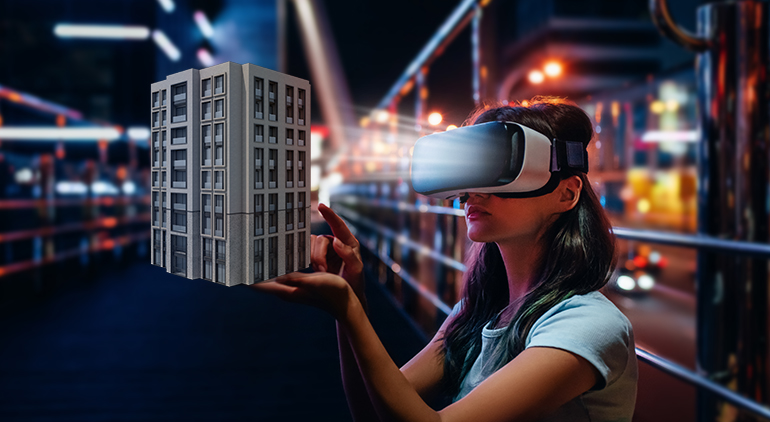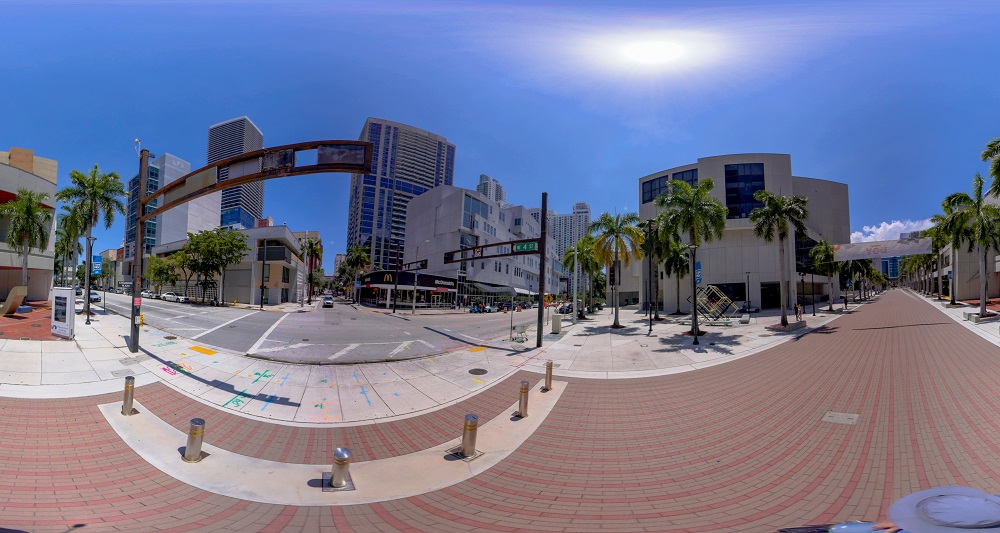The Scope of Virtual Reality Architecture Education

Architecture is a segment that never slows down. The demand keeps on increasing by the day. Tech adoption in the field is at an all time high. And the market commands the necessity for better equipped architects in the coming years.
• Architectural services in the project management and construction segment has a revenue share of over 30% according to Grand View Research.
• The research also shows a CAGR of 5% from 2021 to 2028 in terms of the urban planning sector.
• Globally, the architectural services market is showing a CAGR of 4.7% from 2021 to 2028.
• The market value was estimated to be $333.14 Billion in 2020.
All these point to an ever increasing necessity of architects. 3D tech is proliferating into architectural provisions. The key growth metric expected to emerge in the years to come are innovation and sustainability.
With such an exciting market to cater to, architecture schools and education institutions are looking to revamp their education model. And the following stats by Fortune Insights seem to have arrested their attention:
• The VR education market was at $656.6 Million in 2018 and will reach $13,098.2 Million by 2026.
• The market will exhibit a CAGR of 42.9% from 2018 to 2026.
The time looks ripe to invest. The market is expecting a boom and many leading players are already aboard. Here, we will glance at how virtual reality architecture education will prove to be a game changer in the market. To understand the benefits of virtual reality in architecture training, let us first look at how augmented reality important in education within the architecture segment:|
VR in Architecture
• VR is an engaging visualization method.
• Designers, contractors, and investors can have a better communication strategy through VR.
• Through virtual reality in architecture, VR, an immersive final product can be showcased without actual completion of the project.
• The clients can get to understand the design process and actively participate in the same instead of becoming passive consumers of finished designs.
• Prototyping is greatly enhanced.
According to a research by CGArchitect, 43% of architecture studios and 22% of architecture firms are using VR to enhance their consumer engagement. Now let us look at the applications of augmented reality important in education and student training.
Virtual Reality Architecture Education
Essentially, the following advantages have been exhibited by VR for training purposes:
• Understanding structures and deep diving into the construction process.
• Design students can have remote cooperation, facilitated by virtual reality in architecture design, ensuring a streamlined workflow that leads to better outcomes.
• Alternative data representation options are showcased by integrating VR, BIM, and AR technologies into the curriculum.
Going a bit deeper into the current applications of VR across industries, we can emerge with the following additional use for VR in architecture education:
☑️ The Challenge
• A solid understanding of forms, proportions, and space is crucial for architecture students. A theoretical environment does very little to polish these.
• Moreover, through bookish learning, the students may easily lose focus and spend energy to create a good-looking building instead of a functional one.
• This is mainly because architecture cannot be translated into a photograph. The intricacies of a design need to be explored and experienced.
☑️ The Solution
• Virtual reality allows the integration of virtual tours to the curriculum.
• Through virtual tours, geographic and financial constraints become obsolete.
• The student can get access to their favorite architect’s most prized creation from the comfort of their personal space and explore it to their heart’s content.
• The instructor can add tools and elements to guide the students’ attention to the crucial architectural elements to derive a better learning outcome.
• Another added magnificence is the ability to get views that would be impossible in real life. Like a bird’s eye view of a tower.
 Get the App from Meta Store: Download Now
Get the App from Meta Store: Download Now
We have only brushed the surface of the potential of virtual reality in educating and training architecture students. These opportunities have caught the eye of a few universities. Let us take into account some universities who have already integrated VR and VR architecture into the architectural learning provisions.
Benefits of Virtual Reality in Architectural Education
Universities like the University of Strathclyde and the University of Paris Val De Marne have integrated VR into the architectural curriculum.
But, what makes VR beneficial for them?
Some of the key benefits of virtual reality in architectural education are given below-
☑️ Engaging Visualization
Architectural design includes complex building models but learning about them within the traditional setup is not enough.
Virtual reality allows students to explore and interact with the 3D models of the buildings which allows them to gain a comprehensive understanding of the concepts in the architectural field.
☑️ Showcasing Immersive Designs
With the use of VR in architectural institutions, the students can showcase their realistic final products in the immersive virtual environment without constructing the actual project in real life.
With this idea, the stakeholders and clients can experience the design process and understand the structure before even beginning with the physical construction process.
☑️ Virtual Tours

To address the challenges of teaching architectural principles effectively on the architectural site, educators can use the VR headset to transport to the virtual field.
With VR, students can explore renowned architectural landmarks, they can even design their own spaces and get a better understanding of the architectural intricacies.
☑️ Alternative Data Representation
By combining Virtual Reality, BIM (building information modeling), and Augmented Reality with the existing educational curriculum, the students can showcase their alternative data representation methods.
And the result? It will result in the preparation of students as per the diverse industrial demands.
"Discover the power of Virtual Reality in architecture education: Start designing your future today!"
Examples of VR in Architecture Education
• University of Strathclyde was the first to integrate a virtual environment lab into their architecture department to improve the structure and speed of educating the students.
• University of Paris Val De Marne included the CAVE architecture into their CAAD classes.
• University of Bialystok in Poland has designed virtual cities and independent buildings for the students to explore to understand city planning and architectural integrity in detail.
• More recently, University if Cincinnati has included a range of architectural elements in the virtual format for students to explore and learn in more detail.
As we can observe, the leading industry players are already implementing VR into their curriculum. What can we conclude from this discussion?
Summing Up
When it comes to VR tech in the architectural spectrum, the leading providers are AECOM, IBI Group, Stantec, Jacobs Engineering, HDR, and NIKKEN SEKKEI.
VR, including VR architecture, is currently experiencing adoption as a visualization tool. The future lies in converting VR into an input methodology rather than a mere visualization asset.
Looking even further, we can see remote architects booming in the future, where the architect do not even have to travel to the location to impact the work.
At IXR Labs we lead the pack when it comes to innovations in the higher education spectrum. Learn more about our ground breaking initiatives and cutting-edge tech at www.ixrlabs.com.
.png)
.png)



